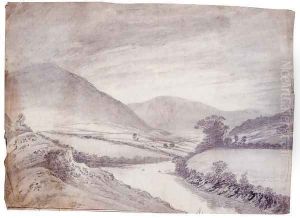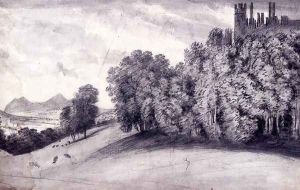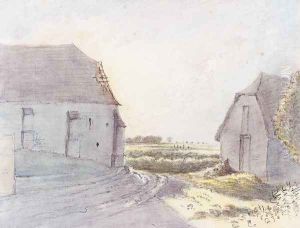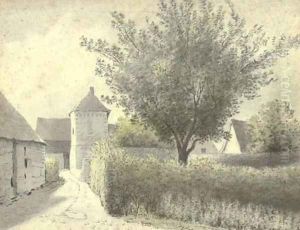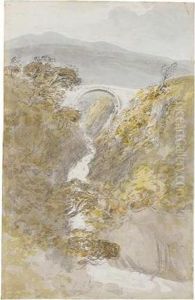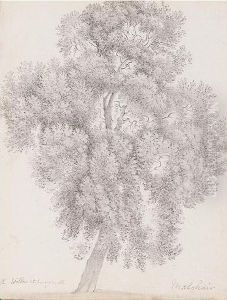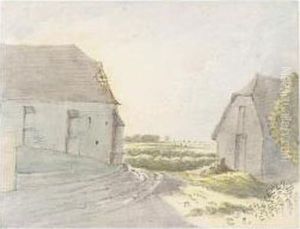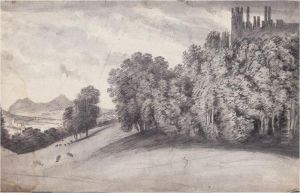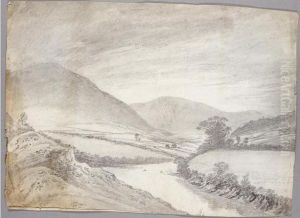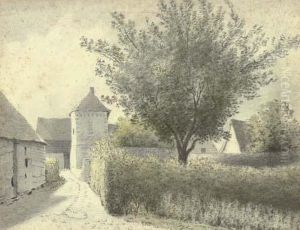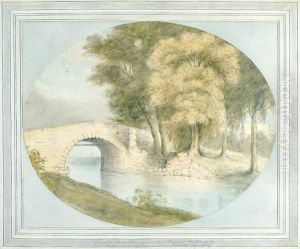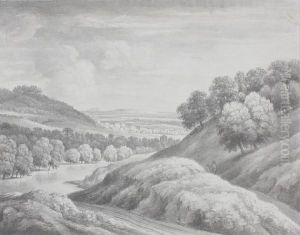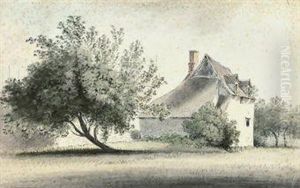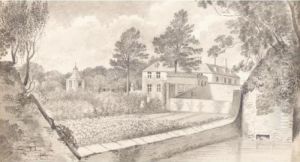John Baptist Malchair Paintings
John Baptist Malchair was a German-born British artist, violinist, and teacher who became a significant figure in the English watercolor movement of the late 18th century. Born in Cologne, Germany, in 1730, Malchair moved to England in the 1750s, where he initially made his mark as a musician. He settled in Oxford and became the leader of the Oxford Music Room orchestra, a position that allowed him to mingle with the intellectual and artistic elite of the time.
Malchair's artistic pursuits began to take precedence over his musical career from the 1760s onwards. He was largely self-taught as an artist, drawing inspiration from the landscapes around him. His approach to watercolor was innovative for its time, focusing on capturing the atmospheric effects and the transient qualities of light and weather. This was a departure from the more detailed and meticulously finished works of his contemporaries, making his contributions to the medium highly influential for future generations of British landscape painters.
Despite his influence, Malchair is often overlooked in art history, overshadowed by the likes of his contemporaries such as Paul Sandby and later, the more renowned artists of the Romantic period. Nevertheless, his work is characterized by a distinctive sense of place and atmosphere, capturing the English countryside with a sensitivity that was ahead of his time. Malchair's interest in meteorology and its effects on the landscape was also notable, and he kept detailed journals recording weather conditions alongside his sketches, a practice that was innovative for its time and reflected a scientific approach to observing nature.
John Baptist Malchair's contribution to the development of watercolor painting in England is significant, particularly in the way he captured the ephemeral qualities of the natural landscape. He passed away in Oxford in 1812, leaving behind a body of work that continues to be studied and appreciated for its unique perspective on the British landscape. His legacy is preserved through his paintings and journals, which remain valuable resources for understanding the evolution of watercolor as a serious artistic medium in England.
